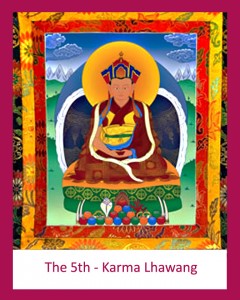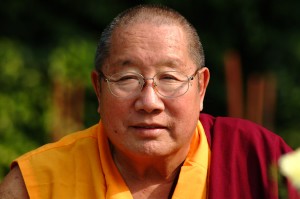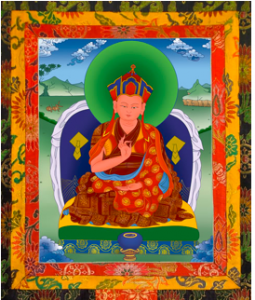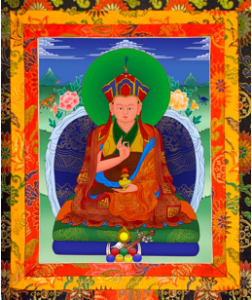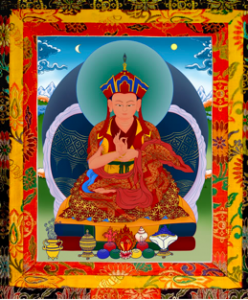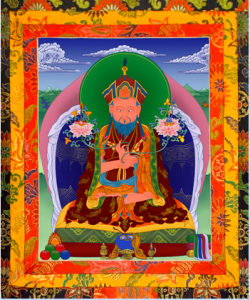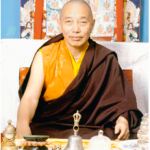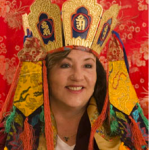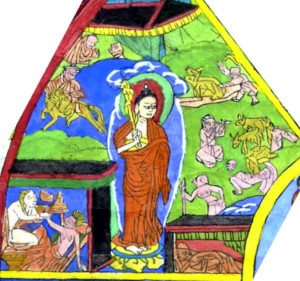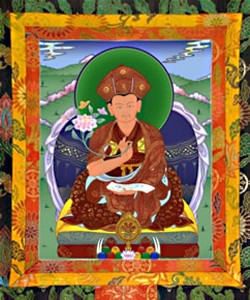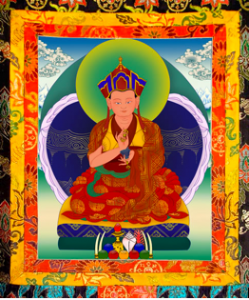 The Sixth Throne Holder
The Sixth Throne Holder
The Second Karma Kuchen Rinpoche,
Gyurmed Ngedon Tenzin Palzangpo
(1794 – 1851)
Karma Gyurmed was born at the foothills of Me Chu Gang in Me Shod in the thirteenth rabjung year of the Wood Tiger (1794). His birth was prophesied by Duddul Lingpa’s Terma revelation. Acting in accordance with the advice of the thirteenth Karmapa Duddul Dorje, the monks of the Palyul Monastery were able to identify the reincarnation of Karma Tashi, the First Karma Kuchen Rinpoche. After Karma Gyurmed was enthroned at Tai Situ Rinpoche’s Palpung Monastery, he started his study of Buddha Doctrine in earnest. The range of transmissions Karma Gyurmed received included those of the kama and terma of the Palyul tradition, the Kham tradition, the Longchen Nyingtig tradition, the Kathog tradition, the Dzogchen tradition, the Jigme Lingpa tradition, the Duddul Lingpa revelation, and many others. Karma Gyurmed went on to incorporate the Longchen Nyingtig’s Three Roots practice of Lama, Yidam, and Khandro into the Palyul tradition.
Similar to his root guru Karma Lhawang, Karma Gyurmed preferred to spend his time in solitary retreat. His principle Yidam in his Three Root practice was Vajrakilaya and he had frequent visions of the full assembly of all seventy-five deities of his Yidam. In one pure vision, he received a visit by Guru Rinpoche who instructed him to introduce the Mendrub Accomplishment Ceremony (the tantric ritual of making dharma medicine) into the Palyul Monastery. Karma Gyurmed also started the tradition of performing the Lama Cham of the Eight Manifestation of Guru Rinpoche, on the tenth day of each Losar, in accordance with the pure vision of Guru Chowang (1212-1270).
Karma Gyurmed’s accomplishment in the Dzogpa Chenpo enabled his disciples to heighten their insight simply by hearing his voice. He sometimes performed miraculous activities for the purpose of removing the mental defilements from sentient beings, such as reading the thoughts of their minds, and in one case left a foot print indentation in a rock by the hot spring of Tilung.
On the twelfth day of the fifth month of his fifty-eighth year, Karma Gyurmed instructed his disciples to prepare a host of offerings when he became aware of the presence of the Buddhas of the three times around him in every direction. The following day, Karma Gyurmed dissolved his mind into the pure realm of truth. His life-like body shrank to the size of mere eighteen inches in height while the sky was filled with extraordinary cloud formations and rainbows. Gyatrul Rinpoche built for his root guru a temple and a two-story Stupa of gold and copper into which the body of Karma Gyurmed, the second Karma Kuchen Rinpoche was placed.
Reference: Pathgate Institute of Buddhist Studies
